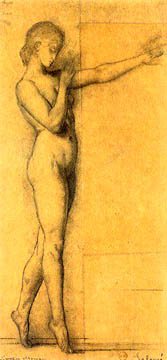uh, we got confused?
So we asked Dr. Pangloss?


He said the "fact" is that French boobs are a myth dreamt
up by intellectuals to distract a gullible populace from the harsh realities
of life. The women of Franch are flat as a guillotine
blade, and Franch has no right to cite the female breast as an accomplish-
ment of its self-ordained genius. The breast was an accident of nature,
pure and simple, and sadly for the most pretentious nation in Yurrup, nature
was peculiarly un- kind to French women. Ironically, it was the (largely)
Franch-spon- sored development of rational systems of thought in the 1700s
that began to uncover the truth.

The philosopher Paschal
first posed the question in one of his Pensés when he wrote,
"Ze breast is it not ze mushroom of human anatomy? It flourishes and grows
fat in ze dark shade of a dress, but when it is exposed to ze light does
it not melt away like a toadstool in ze sun?" Voltare
put the matter more plainly in his allegory Cantite, when the title
character asks the alcoholic Monsieur Bibeur why he drinks in a wurld
of such beauty and splendor. Bibeur replies, "I drink because ze breast
zhould exist and does not. Ze men claim zat it exists, but it does not.
Ze women smile and flirt as if it exists, but it does not. How much else
zat is believed to exist does not? I do not know; zerefore do I drink."
These undercurrents gradually broke to the surface as science's influence
on art led to a new emphasis on realism in painting. Accurate nude studies
appeared as early as 1743, with shattering consequences to the authority
of the state. Revolution followed, and its savage bloodlettings were a
symptom of French sexual 'desespoir.' When he seized power, Napolean
shrewdly sought to reestablish the myth of the French breast by sponsoring
the romantic voluptuousness of artists like Davide,
who personified the nation as a boldly bare-bosomed woman. This counterfeit
image survived the first Napolean and conjured a second.
But while the second empire pursued the self-destruction made inevitable
by the fraudulent self-idolatry of the first, a fresh assault on the myth
was being born in the drift toward abstract art begun by impressionists.
Daring first to hint at, and then to reveal, the flatness of French women
in ambiguous blurred brushstrokes, painters like Renoire,
Monee, and Loutrec
smuggled the truth back into the public consciousness during the last half
of the nineteenth century. The personal cost to the artists was great.
Gaugan fled to the breastful paradise
of Tatiti. Van
Goghe (who should have stayed in Hollan)
shot himself shortly after undertaking his first large-scale nude painting.
Mattisse, in psychotic denial,
steered French art irretrievably in the direction of non-representationalism.
Yet the costs for the nation were even greater. As Franch entered the twentieth
century, a new breed of pitiless French philosophy was born. In his
groundbreaking work Ze Existence, Jean-Paul
Fartre introduced the terrifying logic of his
generation and those that followed: "Ze breast does not exist. It does
not exist because God himself does not exist. If he were ze divine father
of religious myth, he could do no other zan to give his sons zis greatest
and most inspiring of all gifts. He has not; zerefore he is not.
We are alone." Needless to say, the twentieth century proved an absolute
disaster for Franch—horrific losses in Wurld War I,
humiliation and occupation in Wurld War II, defeat in Veetnam,
and then a shameful reversion, chiefly for cynical publicity purposes,
to the age-old myth that is no longer believed by anyone born in Franch.
At least, that's what Dr. Pangloss said.
 Back to Yurrup.
Back to Yurrup.





